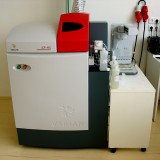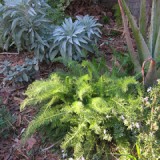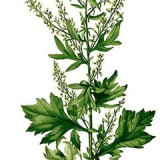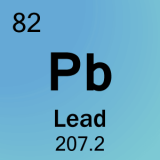This week I thought I’d do a series of posts about soil and heavy metals beginning with a few more details about the possible lead contamination situation in our backyard.
Two weeks ago Darren Butler, who is teaching a vegetable gardening series at our house, led a class project where we took four samples from different locations in the backyard, mixed them together and sent them off to Wallace Laboratories, a local soil testing lab with an international reputation. The results came back showing plant available lead levels at 112 parts per million. Note that “plant available” is different than the total amount of lead in the soil. The total amount would be about ten times higher or 1,120 ppm. According to the University of Minnesota Extension Service,
Generally, it has been considered safe to use garden produce grown in soils with total lead levels less than 300 ppm. The risk of lead poisoning through the food chain increases as the soil lead level rises above this concentration. Even at soil levels above 300 ppm, most of the risk is from lead contaminated soil or dust deposits on the plants rather than from uptake of lead by the plant.
If the Wallace Labs report is correct, we’ve got a serious problem. It is possible that, in sampling and averaging multiple locations, we hit a “hot” spot where someone may have dumped paint or paint chips. Clearly, we’ll have to set up a grid of tests to see if the problem is isolated.
I re-did the first test, trying as best I could to take samples from the same locations and sent this second test off to the less expensive UMass soil testing service. The results came back with substantially lower lead levels: 220 ppm, in the “low” range according to most experts, but still higher than I would like. Except for the soil pH, all the other numbers were completely different.
The next step will be to test the testing services. I’m going to take one sample and split it into three parts, sending one to Wallace, another to UMass and the third to Timberleaf Soil Testing. I hope that two of the testing services agree on something!
In subsequent posts I’m going to discuss what we’re going to do, phytoremediation (spoiler alert: I don’t think it’s practical in residential situations), and my issues with the real estate industry.
This week the Center for Disease Control and Prevention is promoting their National Lead Poisoning Prevention Week. Especially if you have kids, get your soil and the interior of your house tested.







I know from testing when we bought this house that there was lead paint in some of the older parts…it is something we are working to remove before we have kids. Until now I haven’t tested the soil, because we’re growing in containers only, but now I feel like I should.
What’s the deal with chickens scratching around in soils with lead? Does it cause problems with their health and eggs?
Just a suggestion to keep in the back of your mind: I really like Kellogg and Pettigrew’s instructions for phytoremediation in Toolbox for Sustainable City Living. I recommend the rest of the book, too, but you might be interested in that chapter.
@Lyssa: You should definitely have your soil tested before you have kids. About the worst case scenario for lead soils is where a toddler eats a mouthful of earth–or even just gets his favorite toy dirty then sucks on it. Direct ingestion is much worse than uptake through veggies, and little kids have a talent for direct ingestion.
(This is very sad to say, because I’m a big believer in kids playing in the soil and being dirty as possible. I hope people don’t read about lead threats and keep kids out of soil altogether, because dirt time makes strong healthy kids.)
As for the chickens, we don’t know–that’s something we have to look into.
That really stinks about the lead. I am afraid to get this done myself, hate to say. No one cultivated in the yard for decades, where we live. They apparently did rock gardening, instead. Or buried fireplace ashes.
Insofar as phytoremediation, I hear daturas and brugmansias are popular plants for this. They’re certainly interesting plants to grow, provided the local kids don’t realize what you’re growing.
This is a very good argument for raised beds. You can contain and get around your plants better. Fencing will keep out the chickens. Fresh soil for the beds will cover the bad soil and protect your plants. Gardenforyourlife.blogspot.com
Wow, this is really eye opening, and is a call for all of us urban farmers (or whatever you want to call us!) to get our soil tested.
Please do keep us informed on how your lead story goes. Thanks for doing the tests, and writing about it.
Rob in San Jose
We recently had Steve Calanog, an EPA official, who is working on lead remediation in the SF Bay Area give a presentation at a recent East Bay Urban Ag Alliance meeting. He explained that the amount of lead that your soil tests show includes lead that has been immobilized by phosphates and are therefore unavailable for plants and animals to absorb. The only way to determine the difference is by using in-vitro extraction and x-ray absorption spectroscopy, which soil labs just don’t do. By adding phosphates to your soil with fish emulsion, compost, fish bones, raw phosphate, TSP, or phosphoric acid you can remove the bio-availability of the lead. He recently had an article in the NY Times about his research with this.
Also as an FYI his tests of soil from Home Depot showed that their bagged soils are contaminated with lead.
Hi Rachel,
Many thanks! Very helpful–thanks to your comment I’ve written the labs I’ve used to see what their lead technique is-will report back in a post.